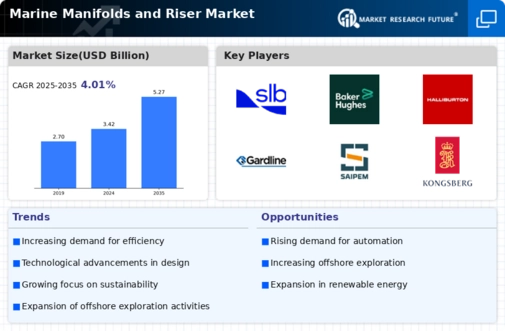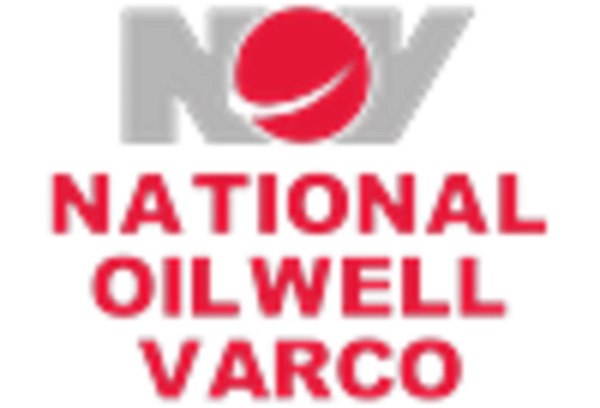Growth of Renewable Energy Initiatives
The Marine Manifolds and Riser Market is also witnessing a shift towards renewable energy initiatives, particularly in offshore wind and tidal energy projects. As countries aim to diversify their energy portfolios, the integration of marine manifolds and risers in these renewable projects is becoming increasingly relevant. These components are essential for the efficient management of energy resources, ensuring that energy generated offshore is effectively transported to the grid. The expansion of renewable energy projects is likely to create new opportunities for manufacturers and suppliers in the marine manifolds and riser market, as they adapt to the evolving energy landscape.
Increasing Demand for Offshore Exploration
The Marine Manifolds and Riser Market is experiencing a surge in demand due to the increasing exploration of offshore oil and gas reserves. As energy companies seek to tap into untapped resources, the need for advanced marine manifolds and risers becomes paramount. These components are essential for the efficient transportation of hydrocarbons from the seabed to surface facilities. According to recent data, offshore production is projected to account for a significant portion of total oil production, necessitating robust infrastructure. This trend indicates a growing market for marine manifolds and risers, as they play a critical role in ensuring operational efficiency and safety in offshore environments.
Regulatory Compliance and Safety Standards
The Marine Manifolds and Riser Market is significantly influenced by stringent regulatory compliance and safety standards imposed by various maritime authorities. These regulations are designed to ensure the safety and environmental protection of offshore operations. Companies are increasingly investing in high-quality marine manifolds and risers that meet or exceed these standards. Compliance not only mitigates risks but also enhances the reputation of operators in the industry. As regulations become more rigorous, the demand for compliant marine equipment is expected to rise, thereby propelling the growth of the marine manifolds and riser market.
Rising Investments in Marine Infrastructure
There is a notable increase in investments in marine infrastructure, which is positively impacting the Marine Manifolds and Riser Market. Governments and private entities are allocating substantial funds towards the development and maintenance of offshore facilities. This investment trend is driven by the need to enhance energy security and meet growing energy demands. As new offshore projects are initiated, the requirement for reliable marine manifolds and risers becomes critical. The influx of capital into marine infrastructure is expected to stimulate market growth, as companies seek to upgrade their systems to ensure efficiency and reliability in operations.
Technological Innovations in Marine Equipment
Technological advancements are reshaping the Marine Manifolds and Riser Market, leading to the development of more efficient and reliable systems. Innovations such as enhanced materials, automation, and real-time monitoring systems are being integrated into marine manifolds and risers. These advancements not only improve performance but also reduce maintenance costs and downtime. For instance, the introduction of corrosion-resistant materials has extended the lifespan of these components, making them more appealing to operators. As the industry continues to evolve, the adoption of cutting-edge technologies is likely to drive growth in the marine manifolds and riser sector, catering to the demands of modern offshore operations.


















Leave a Comment